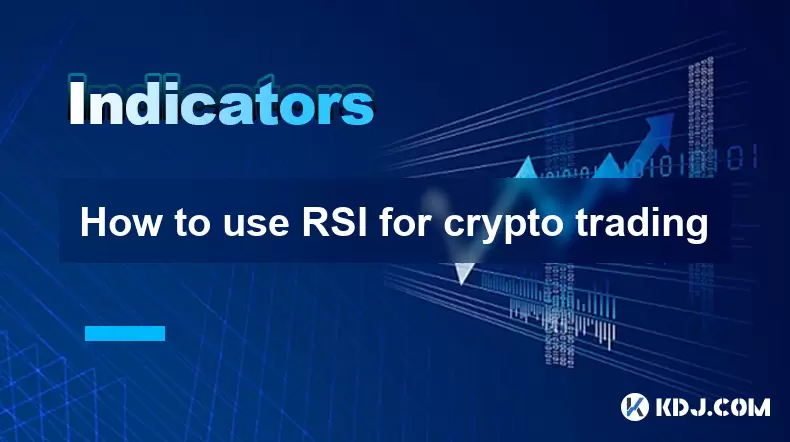-
 Bitcoin
Bitcoin $120400
1.77% -
 Ethereum
Ethereum $3615
7.90% -
 XRP
XRP $3.580
17.84% -
 Tether USDt
Tether USDt $1.001
0.06% -
 BNB
BNB $729.4
1.25% -
 Solana
Solana $179.9
5.04% -
 USDC
USDC $0.0000
0.01% -
 Dogecoin
Dogecoin $0.2311
8.22% -
 TRON
TRON $0.3226
4.04% -
 Cardano
Cardano $0.8490
12.85% -
 Hyperliquid
Hyperliquid $46.45
0.72% -
 Stellar
Stellar $0.4913
8.54% -
 Sui
Sui $4.027
2.00% -
 Chainlink
Chainlink $18.51
11.67% -
 Hedera
Hedera $0.2818
21.51% -
 Avalanche
Avalanche $24.03
7.40% -
 Bitcoin Cash
Bitcoin Cash $508.5
2.90% -
 Shiba Inu
Shiba Inu $0.00001496
3.24% -
 UNUS SED LEO
UNUS SED LEO $8.961
1.83% -
 Toncoin
Toncoin $3.264
3.13% -
 Litecoin
Litecoin $104.6
8.15% -
 Polkadot
Polkadot $4.389
6.11% -
 Uniswap
Uniswap $9.924
10.63% -
 Monero
Monero $337.9
0.49% -
 Pepe
Pepe $0.00001376
2.79% -
 Bitget Token
Bitget Token $4.830
2.46% -
 Ethena USDe
Ethena USDe $1.001
0.05% -
 Dai
Dai $1.000
0.02% -
 Aave
Aave $325.2
1.66% -
 Bittensor
Bittensor $423.7
-0.85%
How to use RSI for crypto trading
The RSI indicator helps crypto traders identify overbought or oversold conditions, aiding in spotting potential price reversals and improving entry and exit timing when combined with other tools.
Jul 13, 2025 at 02:29 pm

Understanding the RSI Indicator in Crypto Trading
The Relative Strength Index (RSI) is a momentum oscillator used to measure the speed and change of price movements. In the cryptocurrency market, where volatility is high, RSI becomes a powerful tool for identifying overbought or oversold conditions. It operates on a scale from 0 to 100, with 70 typically indicating overbought levels and 30 signaling oversold levels. Traders use these thresholds to anticipate potential reversals or corrections in asset prices.
When applied to crypto trading, RSI helps traders assess whether a digital asset is currently overbought or oversold. This can be especially useful in identifying entry and exit points in fast-moving markets. However, it's important to note that RSI should not be used in isolation. Combining it with other indicators or price action analysis enhances its reliability.
Setting Up RSI for Crypto Trading Platforms
Most crypto trading platforms, including Binance, Coinbase, and KuCoin, offer built-in technical analysis tools that include RSI. To set up RSI on these platforms:
- Open the trading chart for the desired cryptocurrency pair.
- Look for the "Indicators" or "Studies" button on the chart interface.
- Search for "Relative Strength Index (RSI)" and click to add it.
- Adjust the default settings if necessary; the standard period is 14, but some traders prefer 7 or 21 depending on their strategy.
- Choose the overbought (70) and oversold (30) levels if they are not already displayed.
Once set up, RSI will appear below the main price chart as a separate window with values fluctuating between 0 and 100. Monitoring these levels helps traders anticipate potential price pullbacks or rebounds.
Interpreting RSI Signals in Crypto Markets
Interpreting RSI correctly is crucial for making informed trading decisions. When the RSI line crosses above 70, it suggests that the asset may be overbought and due for a bearish correction. Conversely, when it dips below 30, the asset may be oversold, signaling a bullish rebound.
However, in strong trending markets, cryptocurrencies can remain overbought or oversold for extended periods. Therefore, it's essential to look for divergences between RSI and price action. For instance:
- If the price makes a new high but RSI does not, this is a bearish divergence, indicating weakening momentum.
- If the price makes a new low but RSI does not, this is a bullish divergence, suggesting potential strength ahead.
These signals can be especially useful in identifying trend reversals or continuation patterns in crypto trading.
Using RSI for Entry and Exit Points
Traders can use RSI to determine strategic entry and exit points in crypto trading. For example:
- When RSI crosses below 70, it may signal a good time to sell or short.
- When RSI crosses above 30, it might be a good opportunity to buy or cover a short position.
Some traders also use midline crossovers (RSI crossing above or below 50) to confirm trend strength. A move above 50 may indicate increasing bullish momentum, while a drop below 50 might suggest weakening buyer interest.
It's important to combine RSI signals with support and resistance levels, candlestick patterns, or other indicators like MACD or moving averages to increase the probability of successful trades.
Common Mistakes When Using RSI in Crypto Trading
While RSI is a powerful tool, it's often misused, leading to poor trading decisions. One of the most common mistakes is trading solely based on RSI levels without considering the broader market context. Cryptocurrencies can stay overbought or oversold for long periods during strong trends.
Another mistake is not adjusting the RSI period for different timeframes. The default 14-period setting works well for daily charts, but for intraday trading, shorter periods like 7 may provide more timely signals.
Additionally, many traders ignore divergence signals, which can be early indicators of trend exhaustion. Failing to incorporate these into analysis can lead to missed opportunities or early exits.
FAQs
What is the best RSI setting for crypto trading?
The best RSI setting depends on the trader’s strategy and timeframe. The default 14-period setting is widely used for daily charts, while shorter periods like 7 may be better for intraday trading.
Can RSI be used for all cryptocurrencies?
Yes, RSI can be applied to any cryptocurrency with sufficient trading volume and price data. However, results may vary based on market conditions and asset volatility.
Is RSI reliable during high volatility in crypto markets?
RSI can still be useful during high volatility, but it may generate more false signals. Combining RSI with other tools like volume analysis or moving averages improves reliability.
How can I avoid false signals from RSI in crypto trading?
To reduce false signals, traders should use RSI in conjunction with price action, trendlines, and other technical indicators. Also, paying attention to divergences can improve accuracy.
Disclaimer:info@kdj.com
The information provided is not trading advice. kdj.com does not assume any responsibility for any investments made based on the information provided in this article. Cryptocurrencies are highly volatile and it is highly recommended that you invest with caution after thorough research!
If you believe that the content used on this website infringes your copyright, please contact us immediately (info@kdj.com) and we will delete it promptly.
- XRP, Dogecoin, and Crypto Bills: What's Shaking in the Crypto World?
- 2025-07-18 20:50:13
- Trump, Family Business, and Power: A New Era of Conflicts?
- 2025-07-18 20:30:12
- Trump, Business, & Bitcoin: A Crypto Capitalist's Vision
- 2025-07-18 20:40:12
- MEXC's Q2 Domination: Riding the Crypto Wave to Market Leadership
- 2025-07-18 18:30:12
- Caldera (ERA) Takes Flight: Binance Listing Ignites Crypto Surge
- 2025-07-18 19:10:13
- Hex Trust and Algorand: Institutional Staking Rewards Take Center Stage
- 2025-07-18 19:50:13
Related knowledge

Advanced RSI strategies for crypto
Jul 13,2025 at 11:01am
Understanding the Basics of RSI in Cryptocurrency TradingThe Relative Strength Index (RSI) is a momentum oscillator used to measure the speed and chan...

Crypto RSI for day trading
Jul 12,2025 at 11:14am
Understanding RSI in the Context of Cryptocurrency TradingThe Relative Strength Index (RSI) is a momentum oscillator used to measure the speed and cha...

Crypto RSI for scalping
Jul 12,2025 at 11:00pm
Understanding RSI in the Context of Crypto TradingThe Relative Strength Index (RSI) is a momentum oscillator widely used by traders to measure the spe...

What does an RSI of 30 mean in crypto
Jul 15,2025 at 07:07pm
Understanding RSI in Cryptocurrency TradingRelative Strength Index (RSI) is a momentum oscillator widely used in cryptocurrency trading to measure the...

What does an RSI of 70 mean in crypto
Jul 13,2025 at 06:07pm
Understanding the RSI Indicator in Cryptocurrency TradingThe Relative Strength Index (RSI) is a widely used technical analysis tool that helps traders...

Does RSI work in a bear market for crypto
Jul 16,2025 at 01:36pm
Understanding RSI in Cryptocurrency TradingThe Relative Strength Index (RSI) is a momentum oscillator used by traders to measure the speed and change ...

Advanced RSI strategies for crypto
Jul 13,2025 at 11:01am
Understanding the Basics of RSI in Cryptocurrency TradingThe Relative Strength Index (RSI) is a momentum oscillator used to measure the speed and chan...

Crypto RSI for day trading
Jul 12,2025 at 11:14am
Understanding RSI in the Context of Cryptocurrency TradingThe Relative Strength Index (RSI) is a momentum oscillator used to measure the speed and cha...

Crypto RSI for scalping
Jul 12,2025 at 11:00pm
Understanding RSI in the Context of Crypto TradingThe Relative Strength Index (RSI) is a momentum oscillator widely used by traders to measure the spe...

What does an RSI of 30 mean in crypto
Jul 15,2025 at 07:07pm
Understanding RSI in Cryptocurrency TradingRelative Strength Index (RSI) is a momentum oscillator widely used in cryptocurrency trading to measure the...

What does an RSI of 70 mean in crypto
Jul 13,2025 at 06:07pm
Understanding the RSI Indicator in Cryptocurrency TradingThe Relative Strength Index (RSI) is a widely used technical analysis tool that helps traders...

Does RSI work in a bear market for crypto
Jul 16,2025 at 01:36pm
Understanding RSI in Cryptocurrency TradingThe Relative Strength Index (RSI) is a momentum oscillator used by traders to measure the speed and change ...
See all articles

























































































